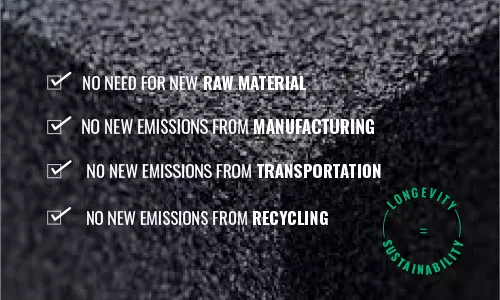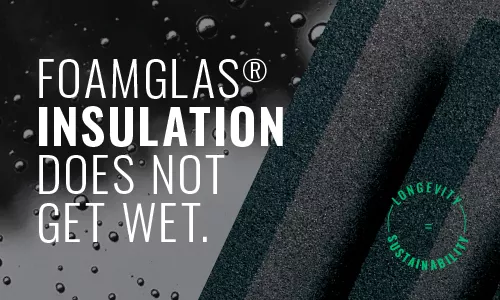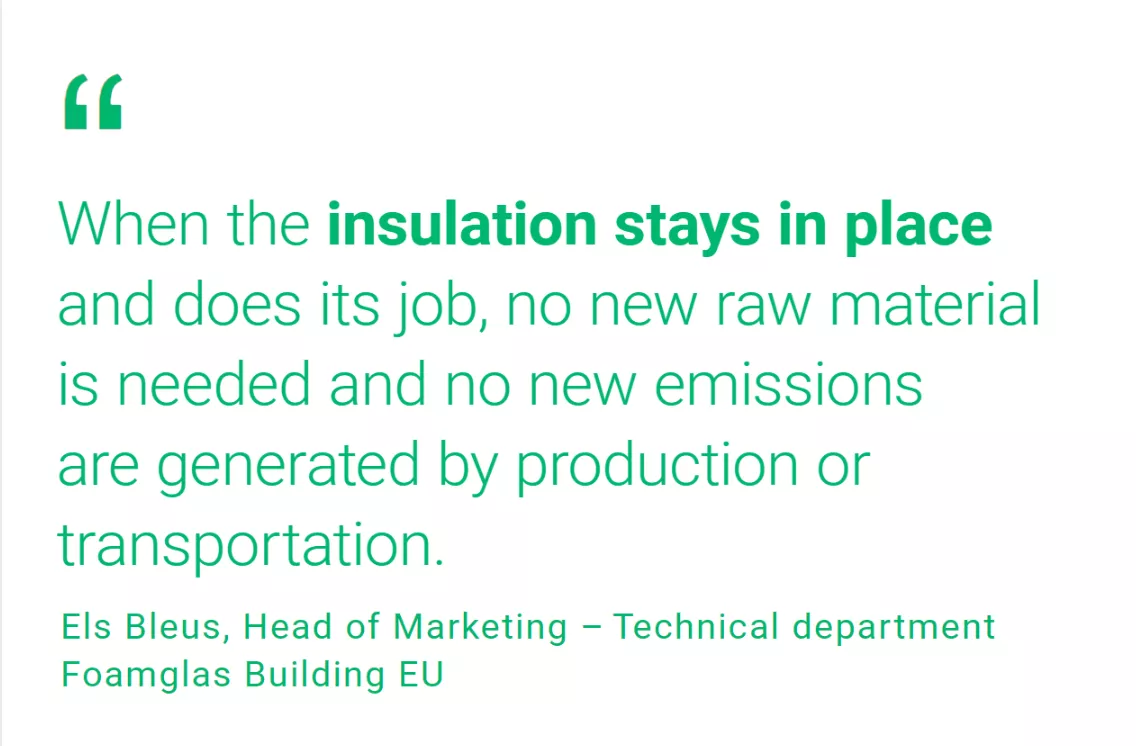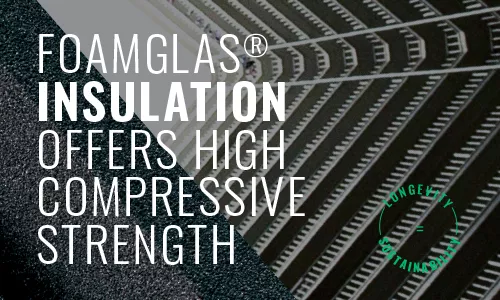Longevity is the essence of sustainability
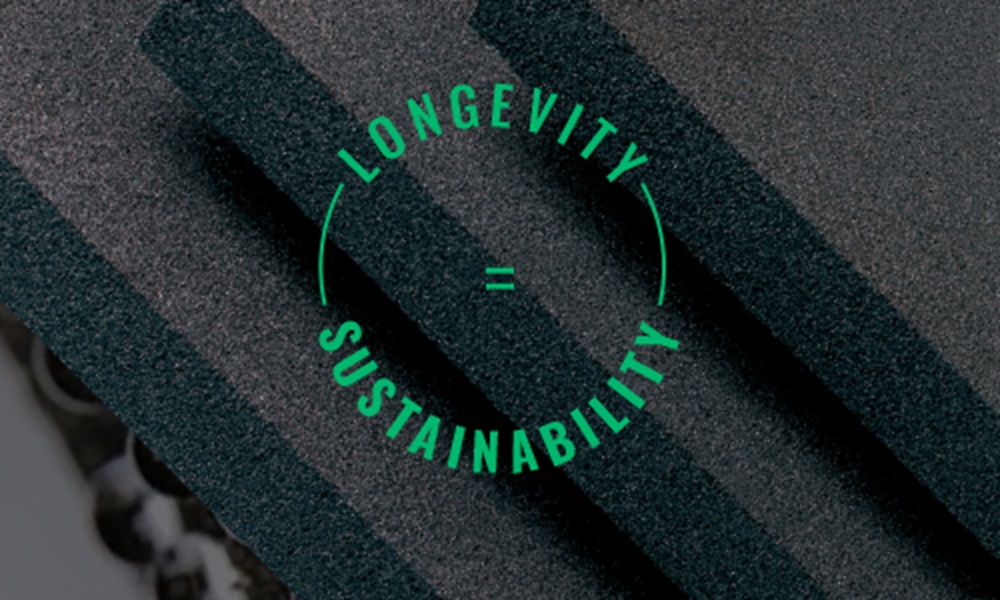
The longer the lifetime of products or applications, the less energy is consumed and less emissions are generated in the production and transportation of new products and in recycling the old. That is why longevity is the essence of sustainability.
Sustainable construction is often associated with concepts like circular economy, recycling, low-carbon manufacturing and renewable electricity. And rightfully so, but one important feature is often overlooked: longevity.
When you think about it, sustainability is fundamentally about using as little virgin raw material as possible and generating the smallest amount possible of emissions. What would save more resources, energy, and emissions than a product that lasts for a century without requiring replacement?
“In our opinion, longevity is an even more important sustainability feature than, for example, recycling,” says Els Bleus, Head of Marketing - Technical departement at Foamglas Building EU.
“Recycling always requires energy, transport etc. When the insulation stays in place and does its job, no new raw material is needed and no new emissions are generated by production or transportation,” Els Bleus explains.
The durability of FOAMGLAS® products is practically unlimited when they are used as designated. In the EPD, the declared service life is 100 years*, based on flat roof application.
But it is not the declared service life that matters the most. What truly matters is the real service life.
FOAMGLAS® insulation does not get wet. Ever.
When insulation is installed on a warm flat roof, it is topped with a waterproofing membrane. The membrane is exposed to sun, rain, storms, and snow, so the lifetime of a waterproofing membrane is on average 15 to 30 years before it will deteriorate and need replacement.
Towards the end of the waterproofing membrane’s lifetime, it starts to show defects and punctures, which cause leakages. The water seeping through is then absorbed by most insulation materials underneath. From that moment onward, the insulation material ages fast, loses its performance and starts to deform. As a consequence, when the membrane is being renewed, it is often the case that the insulation underneath will also need to be renewed.
This is not the case with FOAMGLAS® insulation, as FOAMGLAS® cellular glass does not get wet. Ever. It is made of closed glass cells, so there is not a single gap where water could enter. Even if there are leaks through the membrane, FOAMGLAS® insulation will stay dry, in perfect shape and maintain its performance and robustness. When it comes to longevity and sustainability, this cannot be highlighted enough:
The lifetime of FOAMGLAS® insulation exceeds that of the waterproofing membrane
When it is time to replace the membrane, it is simply peeled off while the FOAMGLAS® insulation stays in place and continues to enhance the building’s energy efficiency as before. All that is needed is new waterproofing.
“The purpose of insulation is to save energy. These savings are calculated for the future, but if the insulation becomes wet before reaching the end of its life cycle, it will need to be replaced. This is not an issue with FOAMGLAS® cellular glass,” Els Bleus says.
FOAMGLAS® insulation offers high compressive strength
On top of being impermeable to moisture, FOAMGLAS® insulation has other properties that translate its longevity into sustainability features. One of the most important ones is its ability to retain shape and strength under pressure.
Depending on the application, FOAMGLAS® is capable of bearing loads of 500kPa to 1600kPa through the lifetime of the application, maintaining its insulation properties without compression, degradation or distortion. There is no need to use additional heavy-duty protective layers in flat roof applications.
Heavy ventilation units, plantations, or other loads on a flat roof exert considerable pressure on the insulation. Most insulation materials will deform under such loads, which causes extra stress on the waterproofing membrane. This will cause the membrane to deteriorate and age faster.
Another important aspect is that, even after FOAMGLAS® insulation has been installed, it is still possible to change the layout on the roof and place new structures on it because FOAMGLAS® cellular glass can support them. This means that there is no need to replace the insulation when converting a flat roof into an active roof, for example.
“FOAMGLAS® insulation has always offered peace of mind for those who think for the long run and want to mitigate risks of leakages and loads. The same longevity that results in low maintenance costs and peace of mind regarding performance also offers the essence of what a sustainable solution is – a solution that stands the test of time and won’t need to be replaced over and over again,” Els Bleus says.
* Stated in EPD-PCE-20200300-IBB1-EN, published by Institut Bauen und Umwelt e.V. (IBU) and based on FIW study by examining real samples from real flat roofs installed decades ago.


